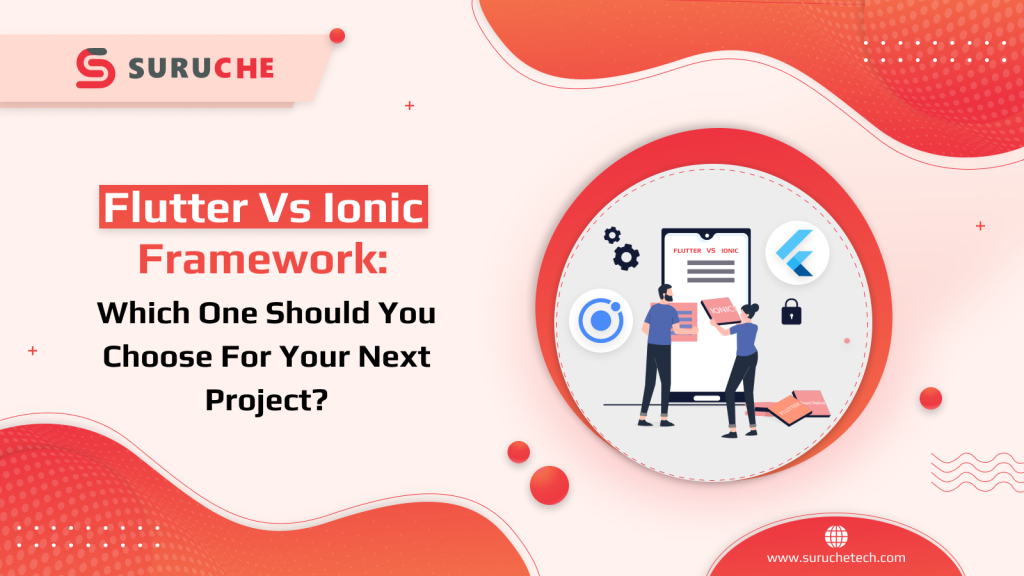In a world that is progressively dealing with smartphones, organizations can’t bear to have anything less than top-notch mobile applications. Mobile application development companies or professionals will generally utilize mobile application explicit systems to develop their applications for quite advantageous reasons: a single codebase for creating Android and iOS applications, platform-independent, native APIs, developer-friendly tools, etc.
That implies having cross-platform applications that can work consistently irrespective of what operating system the user possesses. To achieve this, most experienced engineers will shift focus over to the most well-known choices: Ionic, or Flutter. Choosing out which one of these is best for your next project is a trickier one.
In this article, we will give a definite and useful comparison between Flutter and Ionic for choosing the best system to build your next mobile application.
What is Flutter?
Flutter is a cross-platform software development pack built by Google. The Flutter framework allows engineers to build applications in Dart, utilizing a widgets tree-based design and was at first a cross-platform mobile application development system that created application bundles for Android and iOS. All the more, the Flutter group expanded the structure by supporting desktop (Linux, macOS, Windows) and web targets.
Flutter doesn’t utilize online or platform explicit UI components. It utilizes inbuilt UI tools and renders graphics through the Skia cross-platform graphic library.
Advantages Of Flutter Framework
- Rich widgets
- Hot reloading
- Flawless backend integration
- Quick iteration
Disadvantages of Flutter Framework
- Rendering issues
- Updating roadblocks
- Immaturity of platform
- Platform compatibility
What is Ionic?
Ionic is also a cross-platform mobile app development framework created by Max Lynch and Ben Sperry. Ionic was at first based on top of the Apache Cordova development framework, yet the Ionic team made Capacitor.js as a swap for the Apache Cordova layer.
Ionic doesn’t use native platform explicit UI components. It utilizes native-like, web-based UI components and renders them in a web view component. Ionic allows engineers to develop applications with Angular, React, Vue.js, and Stencil frontend libraries.
Ionic authoritatively supports Android, iOS, and web targets. The designer’s team likewise made Electron-based desktop application generation support.
Advantages Of Ionic Framework
- Works to scale
- Simplified developer interface
- One version does it all
Disadvantages Of Ionic Framework
- Code uglification
- Too reliant on plugins
- Complex applications are left in the cold
- Absence of hot reloading
Flutter VS Ionic Comparative Study
Since you have acquired an essential comprehension of Flutter app development and Ionic app development, this is the ideal time to think about the two along a couple of significant aspects. This will assist you with concluding which one is appropriate for your project.
| Attribute | Flutter | Ionic |
| Performance | A weightless app that easily integrates with many plug-ins. Android integrates with material components, iOS developers use Cupertino widgets | Ionic is not suitable for large scale apps as it doesn’t work well with location-based services, AI, and other high-level libraries |
| Ease of use/Learning | Dart language and basics of Android IOS native development are must | Knowledge of Angular and JavaScript is mandatory, and have an understanding of Cordova plugins, CLI, HTML, and CSS. |
| App size | Dart and C++ may extend the application size, but Flutter can shrink codes, libraries, and plugins to minimize size issues. | With the beginning of Ionic 5, Ionic can shorten run sizes to half the size of Ionic 4. Moreover, the usage of special tags during production build –prod –release additionally reduces the app size |
| Code portability | Use a single code base | It works better for high-end application flexibility |
| Testing | Developers can use flutter test for widget testing, appium for simulating UI testing, and. Flutter driving for instrumental testing for widgets. | No additional testing devices are needed. The app is tested in multiple browsers via WebView. |
| Popularity/ community | There are approx. 662 contributors to the Flutter group | Developer community numbering 5 million from 200 countries. |
Take away
Organizations attempting to discover the differences between Ionic and flutter should focus on the finished result they need to accomplish to pursue a framework choice. Do you have an application that is lightweight, with bunches of moving pictures and elaborate UIs? Pick Ionic. Heavier applications where consistent backend access is key will in all probability profit from utilizing Flutter.
However, regardless of where you descend in the Flutter versus Ionic discussion, having the assistance of specialists to lend their skills can assist with facilitating matters.
At Suruche Tech, we’d love to assist you with getting your next Flutter or Ionic project executed on schedule and under the required plan.




